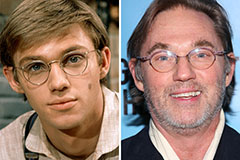The 10-Minute Rule for Dementia Fall Risk
Table of ContentsThe Best Strategy To Use For Dementia Fall RiskNot known Facts About Dementia Fall Risk7 Easy Facts About Dementia Fall Risk ShownThe Ultimate Guide To Dementia Fall RiskThe 9-Second Trick For Dementia Fall Risk
Nonetheless, based upon signs and signs, such as evidence of head injury or a brand-new focal neurologic deficit, calculated tomography or MRI of the brain might be shown - Dementia Fall Risk. An assessment for sources of syncope must be conducted only if there is solid suspicion, as when it comes to reoccurring, inexplicable falls
Healthcare providers use a fall risk analysis to recognize your threat elements for falling and make valuable suggestions. A fall risk analysis is essential because knowing which variables boost your possibilities of falling helps you: Reduce your threat of dropping or harming yourself.
All adults 65 years and older need to have an initial fall risk screening. Have dropped in the past year. Worry regarding dropping.
The 15-Second Trick For Dementia Fall Risk

Explore this extensive nursing treatment strategy and monitoring overview to efficiently stop danger for drops amongst people. Get important understanding concerning the nursing evaluation, taking care of medical diagnosis, and objectives specifically customized to clients who go to threat for drops. A is specified as an occasion that leads to an individual coming to rest unintentionally on the ground or flooring or other lower degree (THAT, 2021).
Falling is the 2nd leading cause of death from unintentional injuries globally. It is estimated that autumn fatality rates in the United state
Excitement About Dementia Fall Risk
If this price proceeds, the CDC prepares for seven view it fall fatalities every hour by 2030.
Annually, over 800,000 patients are hospitalized due to drops. Registered nurses play a major role in protecting against succumbs to their individuals through education and learning, reviewing loss risk, developing safer settings, and supplying interventions in stopping injuries from drops. A number of threat elements and problems contribute to falls, consisting of the following:. Matured 65 years and older; lower arm or leg prosthesis; use assistive tools such as walker, crane, and wheelchair; living alone.
Client will show selective prevention procedures. Patient and caregivers will carry out visite site approaches to enhance security and stop drops in the home. Loss are due to several elements, and an alternative strategy to the specific and environment is essential. Expect a person is taken into consideration at high danger for drops after the testing.
An Unbiased View of Dementia Fall Risk
A calls for using a confirmed device that researchers have actually checked out to be helpful in calling the root causes of falls in an individual. As an individual's health and situations modification, review is needed. The level of loss threat can be determined making use of the analysis of intrinsic and external aspects. Standard analysis tools can also be made use of (talked about below).
Individuals are more probable to fall once more if they have sustained several drops in the past six months. The older population is at raised threat of fall-related readmissions based upon a research study recognizing the factors anticipating of repeat drops associated results (Prabhakaran et al., 2020). Individuals with damaged recognition and disorientation might not comprehend where they are or what to do to assist themselves.
The capability of individuals to protect themselves from drops is affected by such elements as age and development. Older individuals with weak muscles are much more most likely to drop than those that maintain muscular tissue stamina, adaptability, and endurance.
The Only Guide for Dementia Fall Risk
Much less comparison sensitivity was fairly connected with both enhanced prices of falls and Related Site various other injuries, while decreased aesthetic acuity was only associated with boosted fall price (Wood et al., 2011). Sensory assumption of ecological stimuli is vital to safety. Vision and hearing disability limit the person's ability to perceive dangers in the environments.
Older adults who have bad balance or problem strolling are a lot more likely to fall., or various other medical conditions and therapies., and usage of psychotropic medications (Stanmore et al., 2013).
 Alexa Vega Then & Now!
Alexa Vega Then & Now! Marques Houston Then & Now!
Marques Houston Then & Now! Nancy McKeon Then & Now!
Nancy McKeon Then & Now! Tyra Banks Then & Now!
Tyra Banks Then & Now! Richard Thomas Then & Now!
Richard Thomas Then & Now!